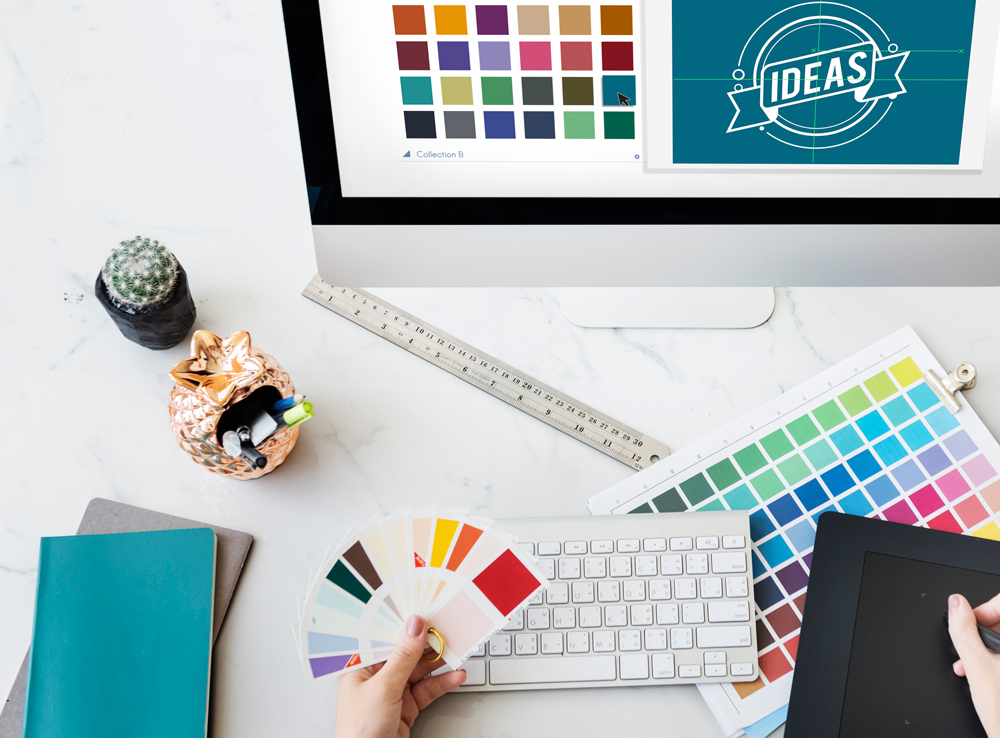
In the competitive world of retail, metal displays play a crucial role in presenting products and creating memorable customer experiences.
Understanding the importance of each step in its development, we have decided to launch a series of articles that will describe in depth the complete process of creating metal displays.
In these articles, we will explore each stage in detail, from the initial client interview to final manufacturing and delivery. Today we begin with the first article, focusing on the client interview, where we lay the groundwork for a successful project.
THE INTERVIEW WITH THE CLIENT, KEY TO THE DISPLAY STAND'S SUCCESS
In the metal display stand manufacturing industry, each project is unique and tailored to the specific needs of the client, for which it is essential to carry out an in-depth interview with all parameters well defined in order to understand the needs and expectations. During this meeting, several key aspects are addressed:
· DISPLAY STAND OBJECTIVE
· DEFINING SPACES
· AESTHETICS AND GRAPHICS
OBJECTIVE OF THE DISPLAY STAND. THE FUNDAMENTAL STARTING POINT
1. Promote Products
One of the main goals of many displays is to promote specific products. This can include:
New product launches: Displays designed to draw customers' attention to a new product.
Special offers and discounts: Highlighting products that are on sale or temporarily discounted.
Highlighting seasonal products: Products relevant to a specific season, such as holiday decorations or summer items.
2. Increase Brand Visibility
Displays not only showcase products, but also reinforce brand identity. This is achieved by:
Use of brand logos and colors: Integrate visual elements that are consistent with the brand image.
Marketing messages: Include slogans, taglines, or advertising messages that communicate the brand's values and benefits.
Distinctive design: Create a design that is immediately recognizable and associated with the brand.
3. Optimize the Sales Space
Displays are designed to make efficient use of the available space in a store or retail outlet:
Maximize storage: Allow the display of the largest amount of products in the smallest possible space.
Facilitate product access: Ensure products are within easy reach of customers to encourage impulse buying.
Improve organization: Help keep products organized and accessible, improving the customer's shopping experience.
4. Inform and educate the customer
Some displays serve the purpose of providing additional information about the products:
Product descriptions: Include detailed information about the features, benefits, and uses of the product.
Demonstrations: Spaces for live demonstrations or digital displays that show how to use the product.
Instructions and tips: Provide quick guides or tips about the product, helping the customer make an informed decision.
5. Boost Cross-Selling
A well-designed display can encourage the sale of complementary products:
Product bundling: Placing products together that are used in combination, for example, a coffee maker next to different types of coffee.
Combination offers: Promotions that offer discounts when several related products are purchased.
Recommendations: Suggestions for additional products that can enhance the customer's experience with the main product.
6. Create Memorable Brand Experiences
Some displays are designed to offer a unique experience that leaves a lasting impression on customers:
Interactivity: Displays that allow customers to interact with the product in a hands-on way.
Multimedia: Use of screens, lights and sounds to attract attention and create an immersive experience.
Innovative design: Unique or themed structures that surprise and delight customers, making them more likely to remember the brand.
7. Differentiation from competitors
In a saturated market, a display can help differentiate a brand from its competitors:
Unique and attractive design: A design that stands out in the point-of-sale environment.
Innovation in materials: Use of unconventional materials or special finishes that attract attention.
Value-added messages: Communication of unique features or exclusive benefits of the products displayed.
DEFINITION OF SPACES: KEY TO AN EFFICIENT DISPLAY STAND DESIGN
The interview with the client is a crucial step to understand not only the client's needs and expectations, but also to clearly define the spaces available for both the exhibitor and their location on the commercial surface.
1. Display stand Space
Defining the space that the display will occupy is essential to determine its size, shape and capacity. During the interview, several aspects are considered:
Storage Capacity: Depending on the number of products to be displayed, the capacity of the display is defined. This influences the design of shelves, hooks or compartments needed to keep products organized and accessible.
Accessibility: It is important to consider how customers will interact with the display. Products should be within reach and visible without obstructions. The height of the display and the arrangement of products should facilitate a comfortable shopping experience.
2. Location on the Commercial Surface
The placement of the display on the retail floor is just as important as its design. A detailed analysis of the location ensures that the display is visible and accessible to customers. Aspects to consider include:
Customer Traffic: Identifying high-traffic areas within stores helps to strategically place the display where it can attract the attention of as many customers as possible. Areas close to the entrance, points of sale, or promotional areas are often the most effective.
Visibility: The display should be in a position that maximizes its visibility. Avoiding hidden locations or corners where customers would not easily see it is crucial. Additionally, lighting and viewing angles should be considered to ensure that products are clearly seen.
3. Type of Display stand: Mobile or Static
The decision of whether the display will be mobile or static depends on the flexibility and functionality required:
Mobile Display: Ideal for stores that need to change the layout frequently or for temporary promotions. Mobile displays are equipped with wheels for easy movement and can be quickly relocated to suit the needs of the moment.
Static Display: Best suited for permanent locations where the display will be fixed in a specific spot. These displays are typically more robust and stable, ideal for displaying products consistently in a predetermined area.

AESTHETIC PREFERENCES AND GRAPHICS
During the interview with the client, one of the most crucial aspects to consider is the aesthetics and graphics of the display.
These elements not only reflect the brand identity, but also play a vital role in attracting customers’ attention and creating a memorable shopping experience. At this point, we will delve into the key points that need to be addressed to ensure that the display is visually appealing, consistent with the brand image, and functionally effective.
1. Brand Identity
It is essential that the display reflects the client's brand identity. This involves:
Logo and Typography: Ensure the brand logo is clearly visible and that corporate fonts are used. Ask about size, placement, and any specific client preferences for the presentation of the logo.
Corporate Colors: Identify the primary and secondary colors of the brand. Display colors should be consistent with the corporate color palette to maintain visual consistency and brand recognition.
2. Style and Theme
The style and theme of the display should align with the overall image the client wishes to project.
Visual Style: Determine whether the client prefers a modern, classic, minimalist, rustic style, etc. This will influence the choice of materials, finishes and overall design.
Specific Theme: If the display is intended for a specific campaign or event, special themes should be considered. For example, a Christmas theme for seasonal products..
3. Materials and Finishes
The choice of materials and finishes is crucial for both the aesthetics and durability of the display:
Material preferences: Consult with the client regarding specific material preferences, such as stainless steel, aluminum, painted iron, wood or glass. Each material provides a different look and feel to the display.
Finishes: Discuss finishing options such as paint, coatings, textures, or polishes. Finishes can significantly influence the final appearance and the exhibitor's perception of quality.
4. Lighting
Lighting can enhance the aesthetics of the display and draw more attention to the products on display:
Lighting Type: Ask if the client prefers LED, fluorescent or some other type of lighting. Also discuss the color temperature (warm, neutral, cool) that best suits the products and the environment.
Lighting Location: Determine whether internal lighting (inside the display) or external lighting (illuminating the display from outside) is desired. The location and angle of the lighting can highlight specific product features.
5. Graphics and Decorations
Graphics and decorations should be consistent with the brand identity and attractive to the target audience:
Graphic elements: Ask about the inclusion of graphics, images or illustrations. This may include patterns, textures, or product images.
Messaging and text: Discuss key messages that should appear on the display. This may include slogans, product descriptions, benefits, or calls to action. Make sure text is legible and well placed.
6. Interactivity and Multimedia Elements
For added impact, some exhibitors may include interactive or multimedia elements:
Screens and Monitors: Ask if they would like to include screens for videos, demonstrations or digital presentations. This can attract more attention and provide additional information about the products.
Interactive Elements: Discuss the possibility of including interactive elements such as buttons, touch panels, or motion sensors that can enhance the customer experience.
7. Adaptability and Personalization
The client may want a display that can be easily adapted or customized for different products or campaigns:
Modularity: Ask if the display should be modular, allowing for changes in the arrangement of shelves, hooks, or compartments based on changing needs.
Removable elements: Discuss the possibility of having removable or interchangeable parts that allow the display to be updated without having to manufacture a new one.
In conclusion, the interview with the client is the cornerstone in the process of creating effective and aesthetically appealing metal displays.
Addressing aspects such as space definition, brand identity, material preferences, lighting, and graphic and decorative elements ensures that the display not only fulfills its practical functions, but also enhances brand presence and captures customer attention.
This initial collaboration is crucial to ensure that every detail aligns with the client’s expectations and needs, resulting in a final product that truly stands out in the retail environment.
In the next article in this series on the process of creating a display project, we will go into more depth about the display design process.


